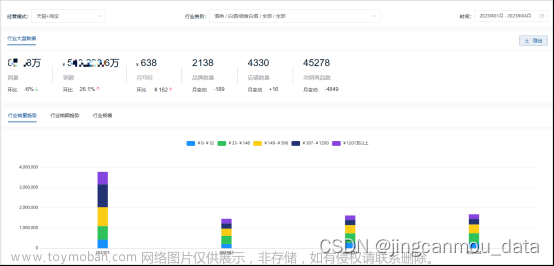1.背景介绍
在今天的数据驱动时代,实时数据分析和报警已经成为企业和组织中不可或缺的一部分。Elasticsearch是一个强大的搜索和分析引擎,它可以帮助我们实现实时数据分析和报警。在本文中,我们将深入探讨Elasticsearch的实时数据分析与报警,并提供一些最佳实践和实际应用场景。
1. 背景介绍
Elasticsearch是一个开源的搜索和分析引擎,它基于Lucene库开发,具有高性能、高可扩展性和实时性。Elasticsearch可以帮助我们实现数据的快速存储、检索和分析,并提供实时报警功能。
实时数据分析和报警是企业和组织中不可或缺的一部分,它可以帮助我们监控系统性能、检测异常情况、预测趋势等。Elasticsearch的实时数据分析与报警功能可以帮助我们更快地发现问题,并采取相应的措施。
2. 核心概念与联系
在Elasticsearch中,实时数据分析与报警主要依赖于以下几个核心概念:
- 索引(Index):Elasticsearch中的数据存储单位,可以理解为一个数据库表。
- 类型(Type):索引中的数据类型,可以理解为一个表中的列。
- 文档(Document):索引中的一条记录,可以理解为一个表中的一行数据。
- 查询(Query):用于查找和检索文档的操作。
- 聚合(Aggregation):用于对文档进行分组和统计的操作。
- 报警(Alert):当满足一定的条件时,向用户发送通知的操作。
这些概念之间的联系如下:
- 通过创建索引,我们可以存储和管理数据。
- 通过创建类型,我们可以对索引中的数据进行更细粒度的管理。
- 通过创建文档,我们可以向索引中添加数据。
- 通过使用查询,我们可以从索引中检索数据。
- 通过使用聚合,我们可以对索引中的数据进行分组和统计。
- 通过使用报警,我们可以在满足一定条件时向用户发送通知。
3. 核心算法原理和具体操作步骤以及数学模型公式详细讲解
Elasticsearch的实时数据分析与报警主要依赖于以下几个算法原理:
- 搜索算法:Elasticsearch使用Lucene库实现搜索算法,包括全文搜索、模糊搜索、范围搜索等。
- 聚合算法:Elasticsearch使用聚合算法对文档进行分组和统计,包括计数、求和、平均值、最大值、最小值等。
- 报警算法:Elasticsearch使用报警算法监控系统性能、检测异常情况、预测趋势等。
具体操作步骤如下:
- 创建索引:通过使用Elasticsearch的RESTful API,我们可以创建索引。例如:
json PUT /my_index { "settings": { "number_of_shards": 3, "number_of_replicas": 1 }, "mappings": { "my_type": { "properties": { "my_field": { "type": "text" } } } } }
- 添加文档:通过使用Elasticsearch的RESTful API,我们可以向索引中添加文档。例如:
json POST /my_index/_doc { "my_field": "some text" }
- 查询文档:通过使用Elasticsearch的RESTful API,我们可以查询索引中的文档。例如:
json GET /my_index/_search { "query": { "match": { "my_field": "some text" } } }
- 使用聚合:通过使用Elasticsearch的RESTful API,我们可以使用聚合对文档进行分组和统计。例如:
json GET /my_index/_search { "query": { "match": { "my_field": "some text" } }, "aggregations": { "my_aggregation": { "terms": { "field": "my_field" } } } }
- 设置报警:通过使用Elasticsearch的RESTful API,我们可以设置报警。例如:
json PUT /my_index/_alert { "actions": [ { "type": "email", "recipient": "my_email@example.com", "subject": "Elasticsearch Alert", "body": "An alert has been triggered." } ], "conditions": { "field": "my_field", "comparison": "gt", "value": 100 }, "enabled": true, "tags": ["my_tag"] }
数学模型公式详细讲解:
- 搜索算法:Lucene库提供了一系列搜索算法,包括TF-IDF、BM25等。
- 聚合算法:Elasticsearch提供了一系列聚合算法,包括count、sum、avg、max、min等。
- 报警算法:报警算法可以根据不同的条件和策略设置报警,例如:
threshold = value + (value * coefficient)
其中,threshold是报警阈值,value是数据值,coefficient是比例系数。
4. 具体最佳实践:代码实例和详细解释说明
在实际应用中,我们可以通过以下几个最佳实践来实现Elasticsearch的实时数据分析与报警:
- 使用Elasticsearch的RESTful API进行数据存储、检索和分析。
- 使用Elasticsearch的聚合功能对数据进行分组和统计。
- 使用Elasticsearch的报警功能设置报警策略。
以下是一个具体的代码实例:
```python from elasticsearch import Elasticsearch
创建Elasticsearch客户端
es = Elasticsearch()
创建索引
es.indices.create(index='my_index', ignore=400)
添加文档
doc = { "myfield": "some text" } es.index(index='myindex', id=1, document=doc)
查询文档
query = { "match": { "myfield": "some text" } } response = es.search(index='myindex', body=query)
使用聚合
aggregation = { "terms": { "field": "myfield" } } response = es.search(index='myindex', body={"query": query, "aggregations": aggregation})
设置报警
alert = { "actions": [ { "type": "email", "recipient": "myemail@example.com", "subject": "Elasticsearch Alert", "body": "An alert has been triggered." } ], "conditions": { "field": "myfield", "comparison": "gt", "value": 100 }, "enabled": True, "tags": ["mytag"] } response = es.putalert(index='my_index', body=alert) ```
5. 实际应用场景
Elasticsearch的实时数据分析与报警可以应用于以下场景:
- 监控系统性能:通过实时监控系统性能,我们可以及时发现问题并采取相应的措施。
- 检测异常情况:通过实时检测异常情况,我们可以及时发现潜在的风险并采取措施。
- 预测趋势:通过实时分析数据,我们可以预测未来的趋势并制定相应的策略。
6. 工具和资源推荐
在使用Elasticsearch的实时数据分析与报警功能时,我们可以使用以下工具和资源:
- Elasticsearch官方文档:https://www.elastic.co/guide/index.html
- Elasticsearch官方API文档:https://www.elastic.co/guide/en/elasticsearch/reference/current/apis.html
- Elasticsearch官方Python客户端:https://github.com/elastic/elasticsearch-py
- Elasticsearch官方Java客户端:https://github.com/elastic/elasticsearch-java
- Elasticsearch官方Go客户端:https://github.com/elastic/elasticsearch-go
7. 总结:未来发展趋势与挑战
Elasticsearch的实时数据分析与报警功能已经成为企业和组织中不可或缺的一部分。在未来,我们可以期待Elasticsearch在实时数据分析与报警方面的进一步发展和完善。
未来的挑战包括:
- 提高实时性能:为了满足实时性能的需求,我们需要不断优化和调整Elasticsearch的配置和参数。
- 扩展功能:我们可以通过开发和集成新的插件和组件,扩展Elasticsearch的实时数据分析与报警功能。
- 提高安全性:为了保障数据安全,我们需要不断优化和完善Elasticsearch的安全功能。
8. 附录:常见问题与解答
Q: Elasticsearch的实时数据分析与报警功能有哪些限制?
A: Elasticsearch的实时数据分析与报警功能可能受到以下限制:
- 性能限制:根据Elasticsearch的配置和参数,实时性能可能受到限制。
- 数据限制:根据Elasticsearch的存储空间和配置,数据可能受到限制。
- 功能限制:根据Elasticsearch的功能和插件,实时数据分析与报警可能受到限制。
Q: Elasticsearch的实时数据分析与报警功能如何与其他技术相结合?
A: Elasticsearch的实时数据分析与报警功能可以与其他技术相结合,例如:
- 与Kibana结合,实现更丰富的数据可视化和报警功能。
- 与Logstash结合,实现更高效的数据收集、处理和分析功能。
- 与Apache Spark结合,实现大规模数据分析和报警功能。
Q: Elasticsearch的实时数据分析与报警功能如何与云服务相结合?文章来源:https://www.toymoban.com/news/detail-828124.html
A: Elasticsearch的实时数据分析与报警功能可以与云服务相结合,例如:文章来源地址https://www.toymoban.com/news/detail-828124.html
- 与AWS Elasticsearch结合,实现云端实时数据分析与报警功能。
- 与Azure Search结合,实现云端实时数据分析与报警功能。
- 与Google Cloud Search结合,实现云端实时数据分析与报警功能。
到了这里,关于Elasticsearch的实时数据分析与报警的文章就介绍完了。如果您还想了解更多内容,请在右上角搜索TOY模板网以前的文章或继续浏览下面的相关文章,希望大家以后多多支持TOY模板网!












